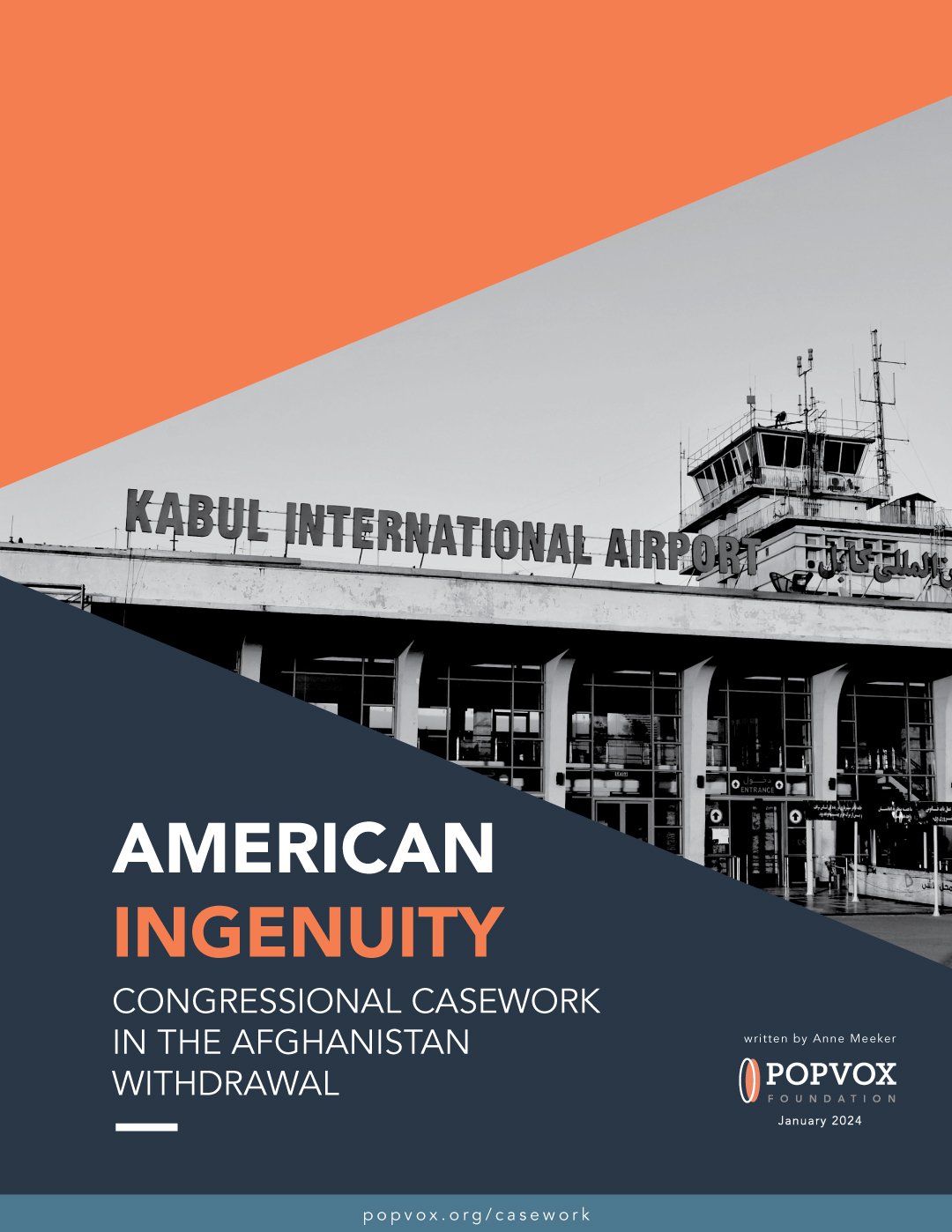Part III: Reimagining Casework
Download (PDF)
Casework in the US withdrawal from Afghanistan was only a small piece of a larger story. Beyond the final weeks of the withdrawal, caseworkers in Congressional offices have been handling the impact of the US involvement in Afghanistan and the global war on terror for decades. These cases include citizens serving in the military, veterans seeking care and benefits, American allies seeking safety, and family members of those wounded or killed seeking solace in information and support. There is no alternate history of how pieces of institutional reform could have perfectly avoided what would always be a difficult episode in American history and governance. Casework is how Congress comes face to face with the human impact of its legislative actions.
Since the development of the American administrative state, Congress has had to balance between prioritizing direct response and advocacy on behalf of individual constituents (casework) with maintaining its own capacity to absorb information and produce policy. In an environment where resources for the Legislative branch have been constrained, this has been seen as a zero-sum game: an increase in one side has resulted in a decrease in the other.
But for all of the dire warnings about Congress’ declining capacity to legislate, Members continue to send a clear signal of belief in casework and its value by continuing to allocate significant amounts of their limited resources to constituent service. Several former Members quoted in a report from the US Former Members of Congress Association underscore the great personal value they place on being able to provide this type of service:
“I learned at an early age that elected officials are public servants, and I never forgot that. So, when I ran for Congress and got elected, I brought my experience of focusing on helping constituents to my new job,” said one Member. Said another, “Where you really make a difference is in constituent services.” One described his job as “not just about going to Washington and voting yes or no. It’s about being that conduit between the public and their government.” As one observed, “Those things are big back home, and your constituency doesn’t forget about that.” Another put it this way: “I didn’t go there expecting to find a high functioning body, so that’s not really the reason. The service component and helping people, constituents, and meeting with people has been very rewarding. That was the motivation for me.”¹
It is perhaps in part because of this clear value of casework to Members and constituents that previous efforts to reform its position in Congress have been unsuccessful.
The Afghanistan withdrawal crisis points to ways that casework works, balanced on the dedication, creativity, and labor of the thousands of public servants in Congressional district offices handling constituent services. But it also points to ways that casework can be modernized and better supported to contribute to both halves of Congressional capacity: providing excellent constituent services while leveraging casework to strengthen Congress’ legislative and oversight capacity.
These questions of capacity have always been existential for Congress’ status as the First Branch of American government, but perhaps no more so than right now: In the next few years, Congress must adapt faster than ever before to keep pace with rapidly-changing developments in technology that will fundamentally reshape American society and government. New technologies and internal efforts to envision a Congress that works for the 21st century may unlock new ways to maintain the effective pieces of current casework, while finding new ways to translate caseworker expertise into action.
So what’s next?
Over the next year, POPVOX Foundation plans to convene stakeholders, including caseworkers, constituents, Members, support staff, historians, oversight experts, and more to begin answering this question. Forthcoming work will be published at popvox.org/casework.
¹ Mark Sobol and Leonard Steinhorn, “Congress at a Crossroads,” US Former Members of Congress Association (July 2020)

